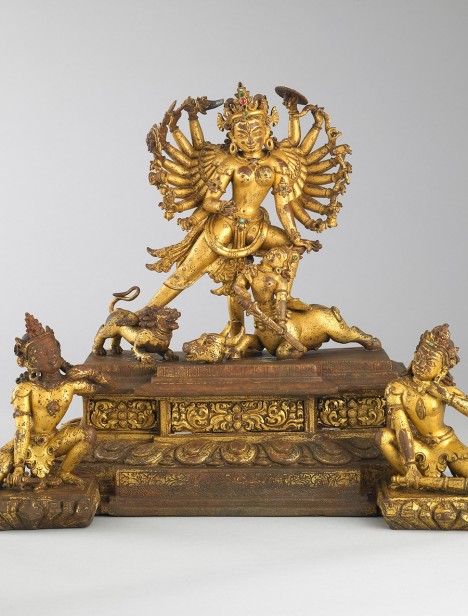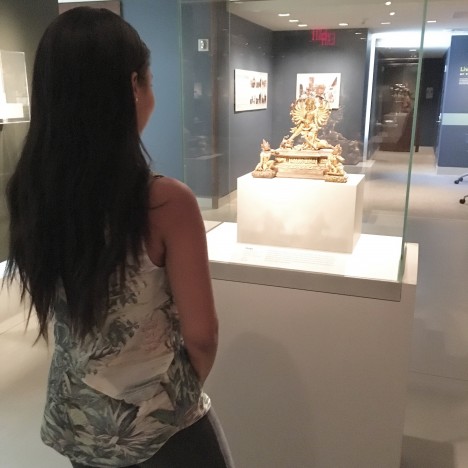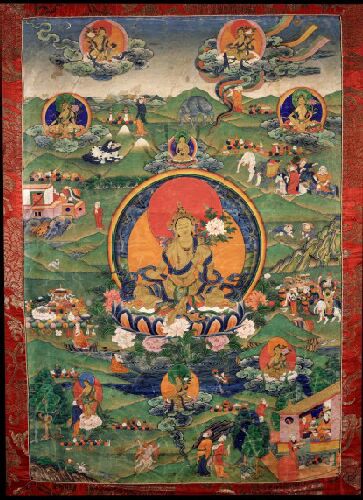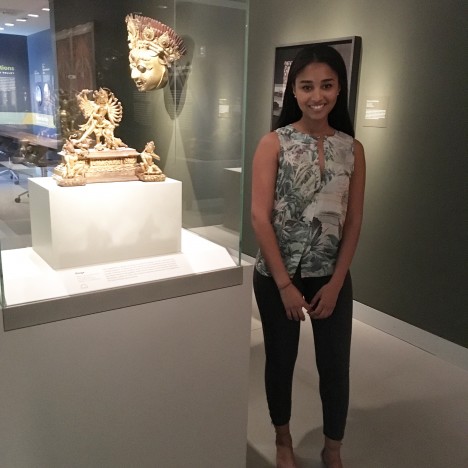
While the Rubin’s summer interns have been helping to support the Museum’s work over the past nine weeks, they’ve gotten to know the artwork in the Museum pretty well too! Read below to learn about their experiences working at the Museum and their favorite deities:
Zineb Ouachtouki, Public Relations & Marketing Intern
What sort of work have you done as an intern at the Museum this summer?
I’ve been getting familiar with the art and programming at the museum in order to communicate the Museum’s offerings to visitors and those who have never been to the Rubin before. I think that the Rubin has something for every type of person—from a yogi to a fashionista—and I’m working on making sure visitors know how to plan a great Museum visit!
Other than working on my itineraries project, I also help the Marketing team write and publish blog posts, monitor press coverage, and develop our media contacts.
Which art object did you select?
My favorite piece at the museum is Durga Killing the Buffalo Demon.
What can you tell us about art object? Why is it your favorite?
While working on my visitor itineraries project, I was researching deities in Hinduism that relate to feminism. At school, I am a Women, Gender, and Sexuality Studies minor, so it should come as no surprise that Durga quickly became my all-time favorite Himalayan deity. In Hinduism, Durga is seen as the personification of all the gods and represents the ultimate expression of feminine energy that essentially animates all things in the universe.

The sculpture itself, which is called Durga Killing the Buffalo Demon, is so powerful and inspiring. The sculpture represents Durga in the moment of her victory having just chopped off the buffalos head and stabbing a demigod. The demigod’s two companions are kneeling before her with their weapon dropped in defeat.
Over the past few weeks, I have realized that this sculpture is able to perfectly capture both movement and stillness. Durga’s powerful position and many arms are juxtaposed by her delicate features and serene facial expression.I think everything about the sculpture is flawless; it is hard to believe that it is over eight-hundred years old!

Emily Plotnikov, School and Family Programs Intern

What have been your responsibilities as an intern this summer?
This summer I have been focusing on aligning the museum’s workshops with the Common Core Standards. I have been evaluating previous programs, and helping to write a new curriculum for 2017. I recently wrote lesson plans for the upcoming Nepalese Seasons and Mindfulness workshops! I am currently focusing on creating a curriculum for an after-school program, brainstorming Family Sunday themes, and even creating webpage descriptions for K-12 workshops. In addition, this summer I was part of the team who planned and executed art activities for the incredible Rubin Museum Block Party!
Which art object did you select?
I selected Tara Protecting From The Eight Fears, which is part of the museum’s Masterworks of Himalayan Art.

What can you tell us about the object? Why is it your favorite?

The Tibetan female deity is shown several times in this piece, representing her omnipresence and power to heal all. Not only am I fascinated by the story behind this piece and Tara’s ability to protect from physical and psychological difficulties, but I also am a fan of the choice of colored pigment that the artist used on this cloth: vibrant, yet delicate. Specifically, I am drawn to the warm orange and red colors that frame Tara, as well as the exquisite lotus flowers around the center image. This image continues to capture my attention every time I walk through the museum and always reminds me of the intricacies and beauty of life.
Find out about Museum internship opportunities and other programs designed for college students and recent graduates, like the Rubin’s College Committee and Apprentice Museum Educator program.


